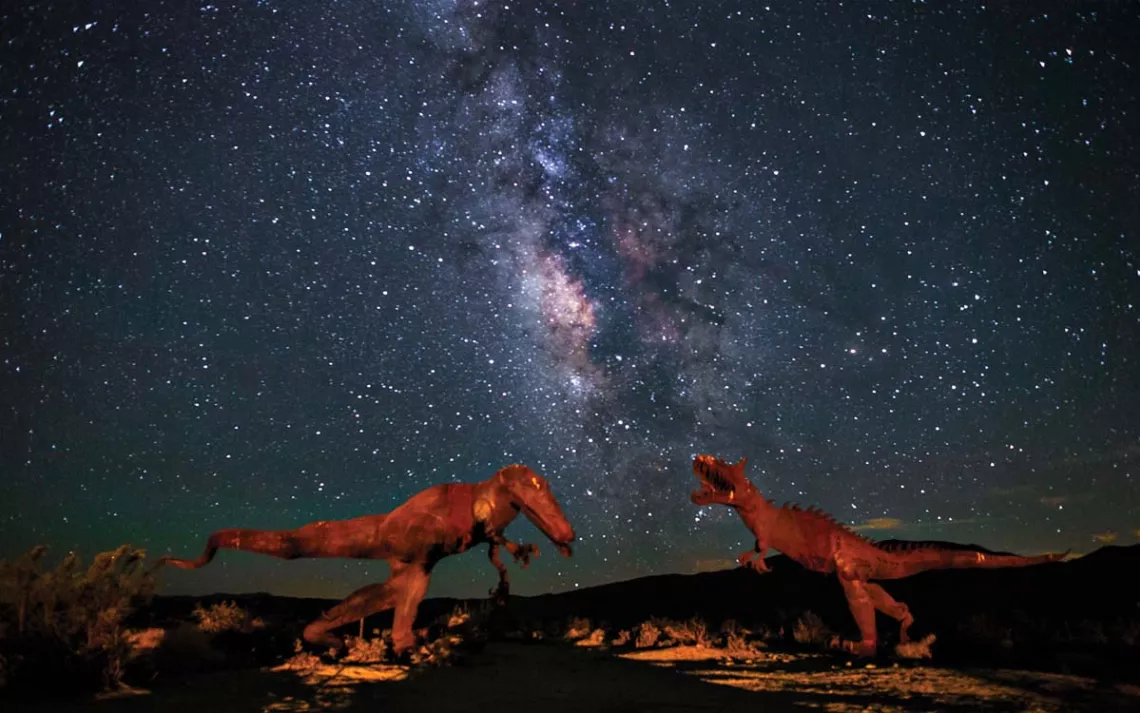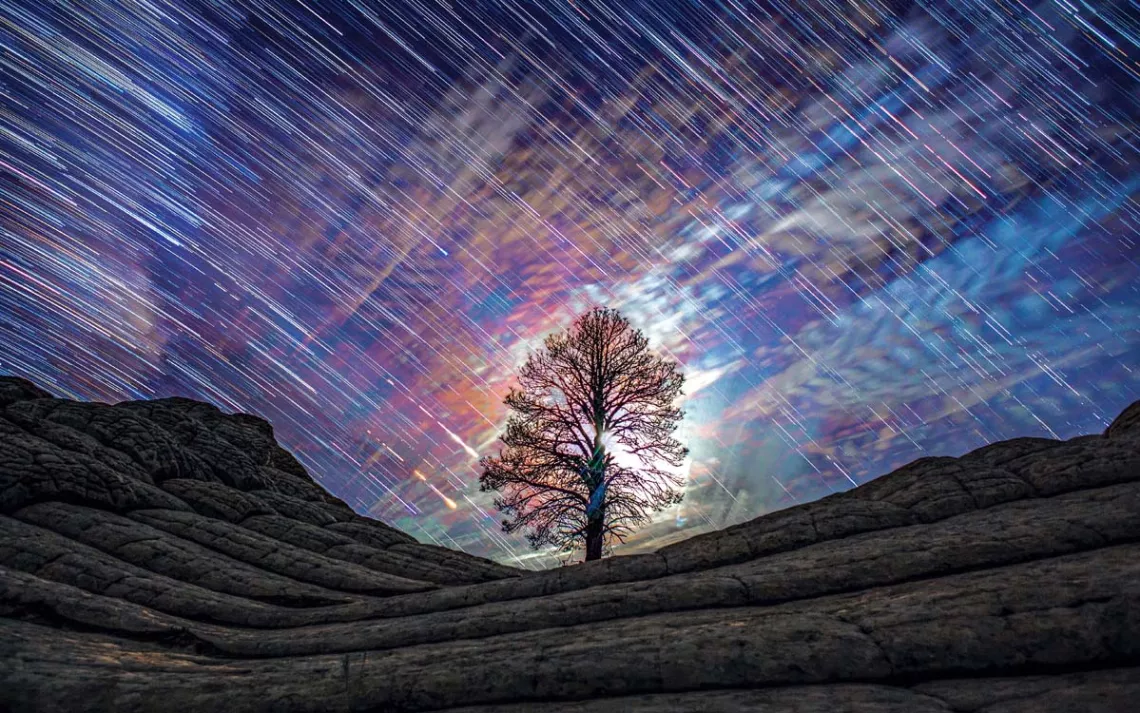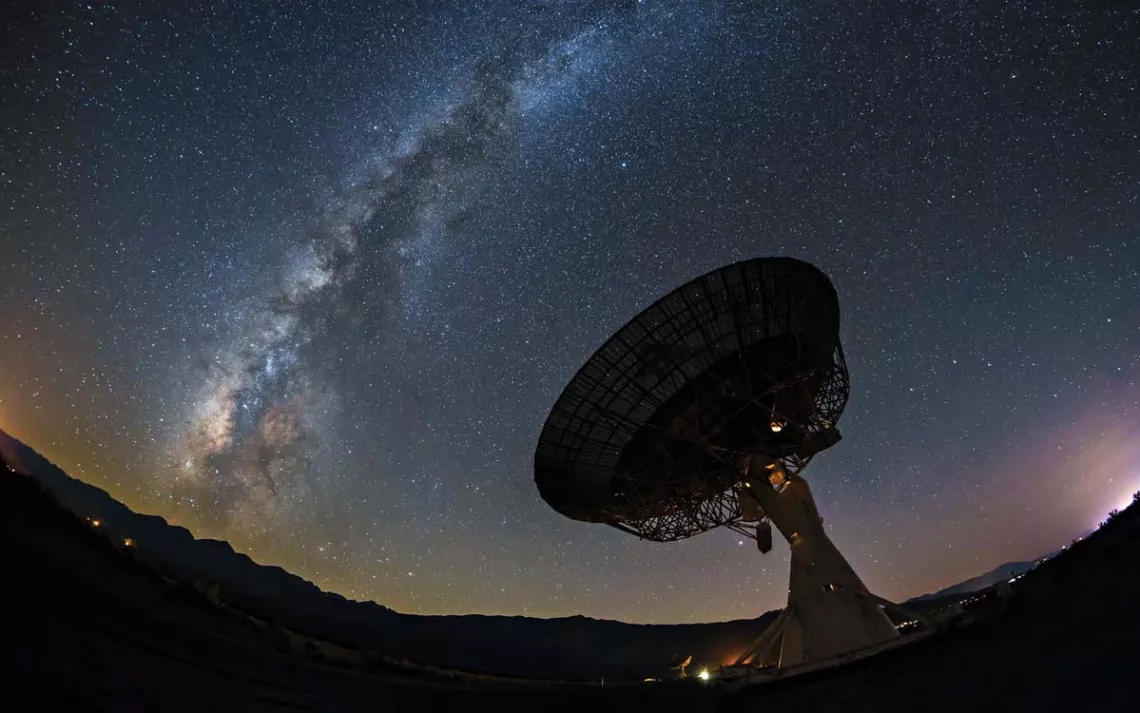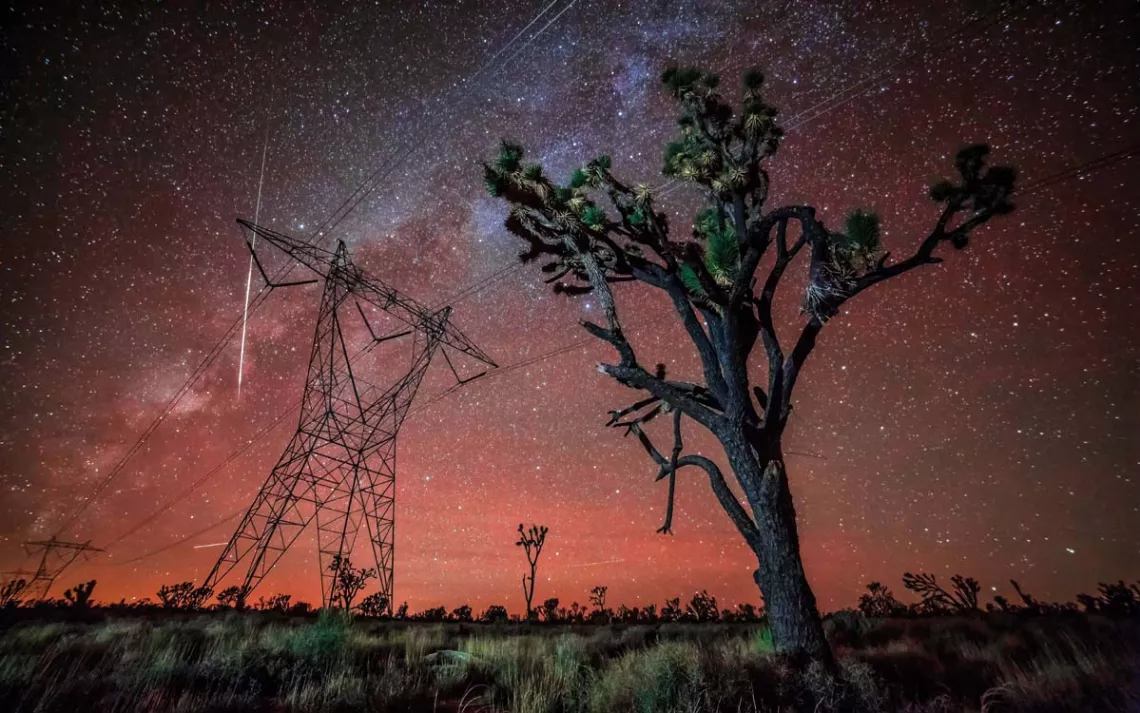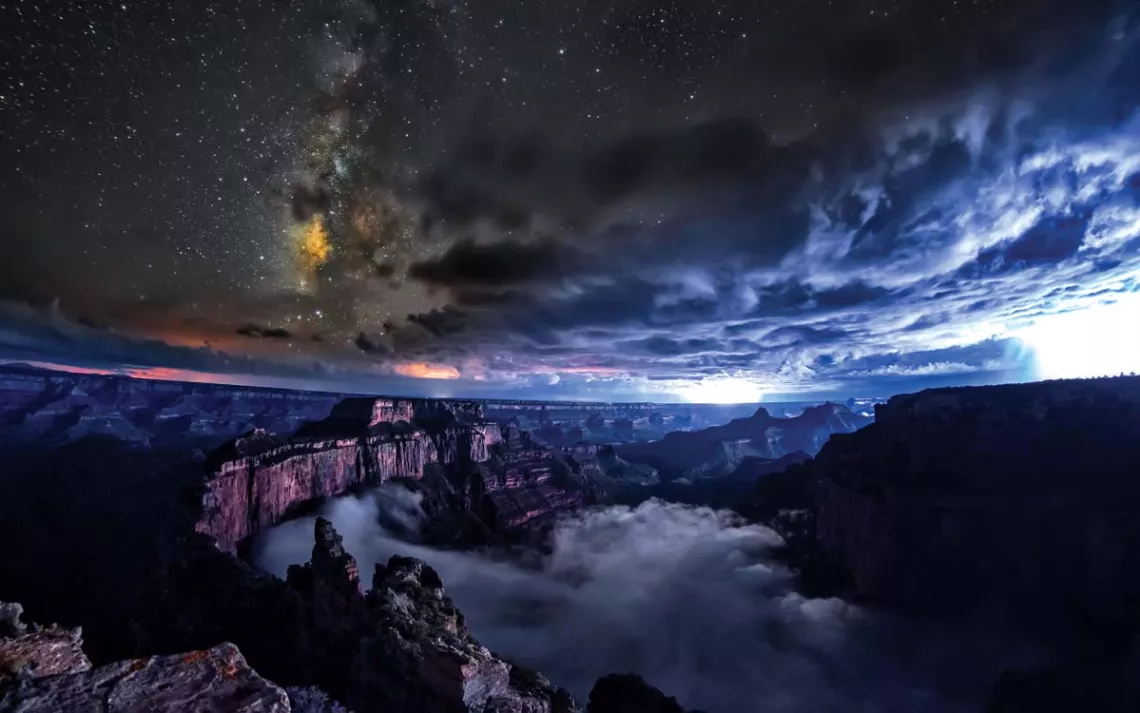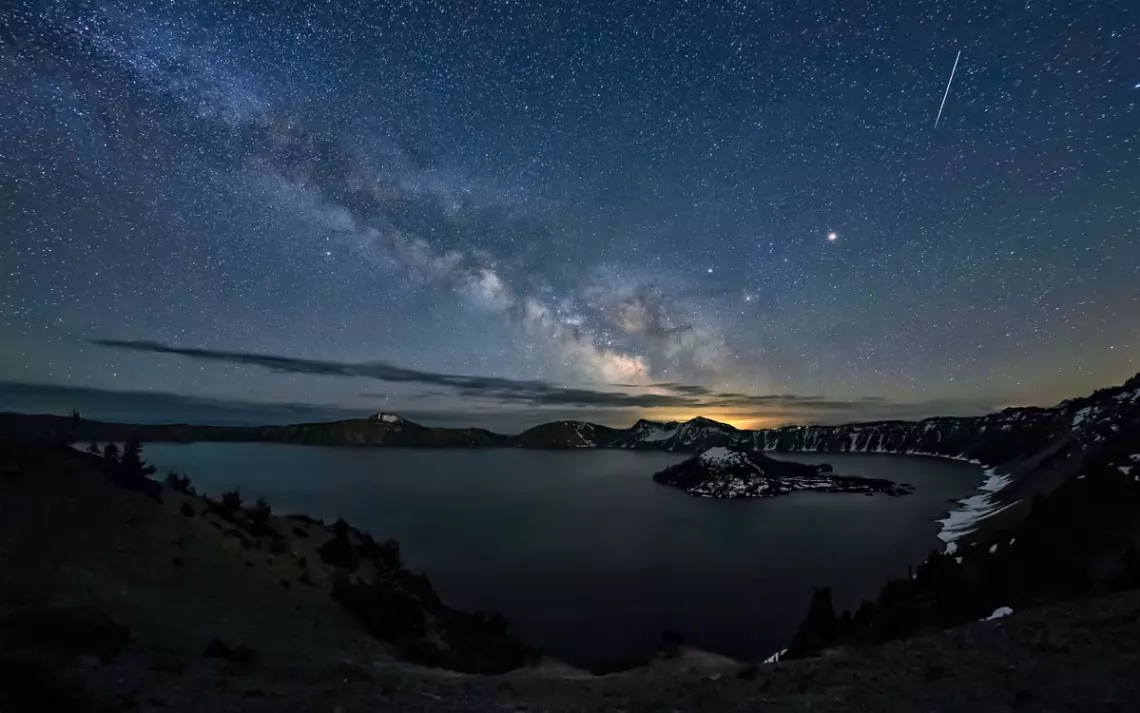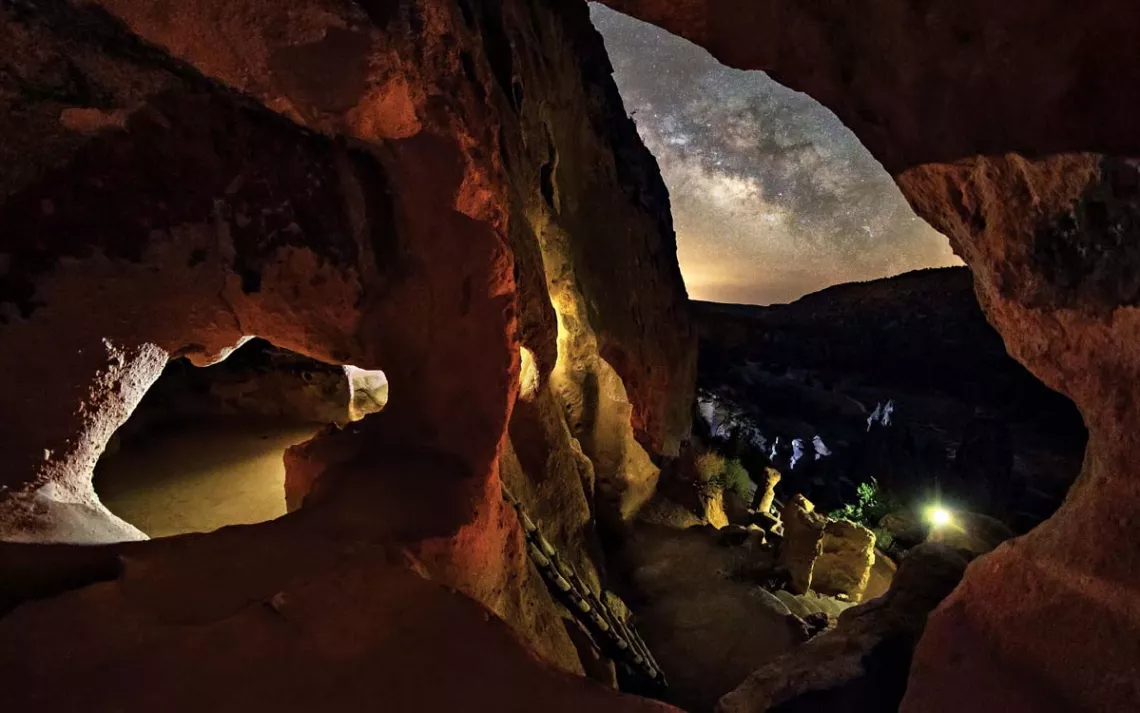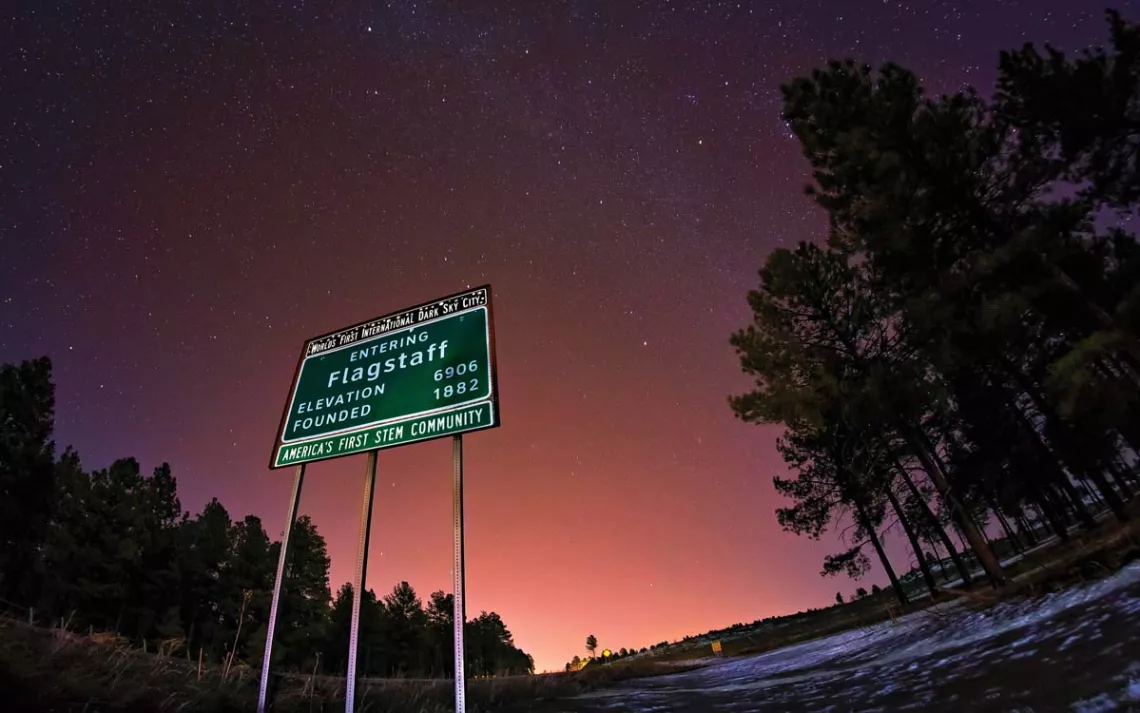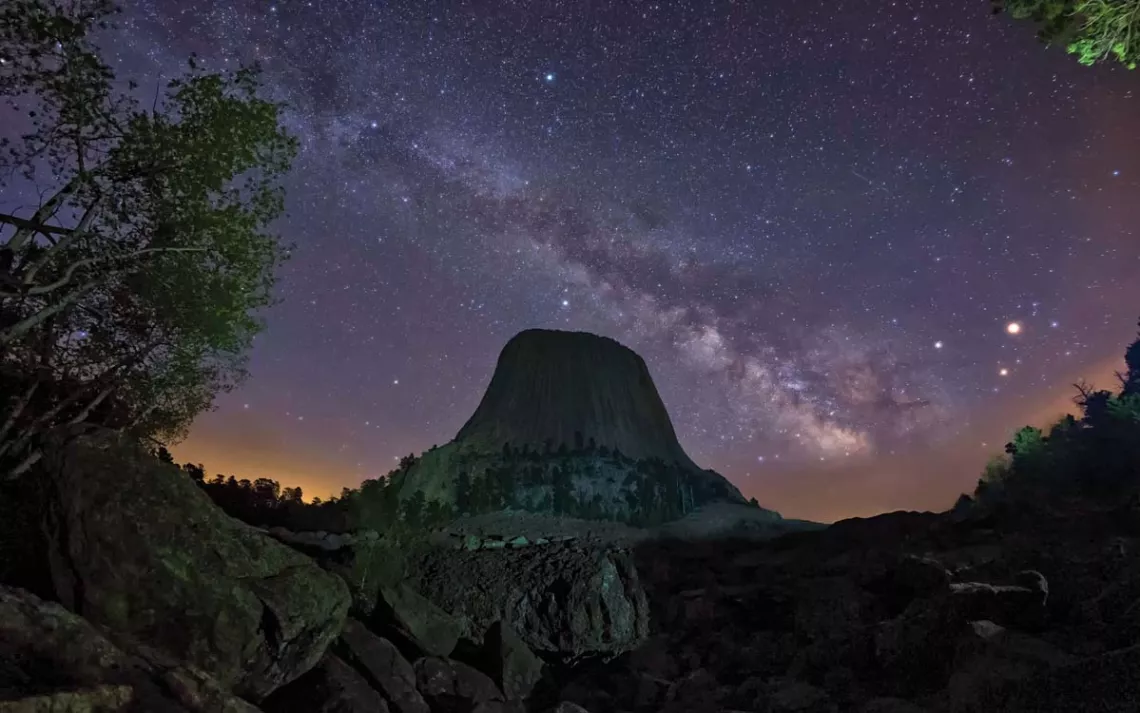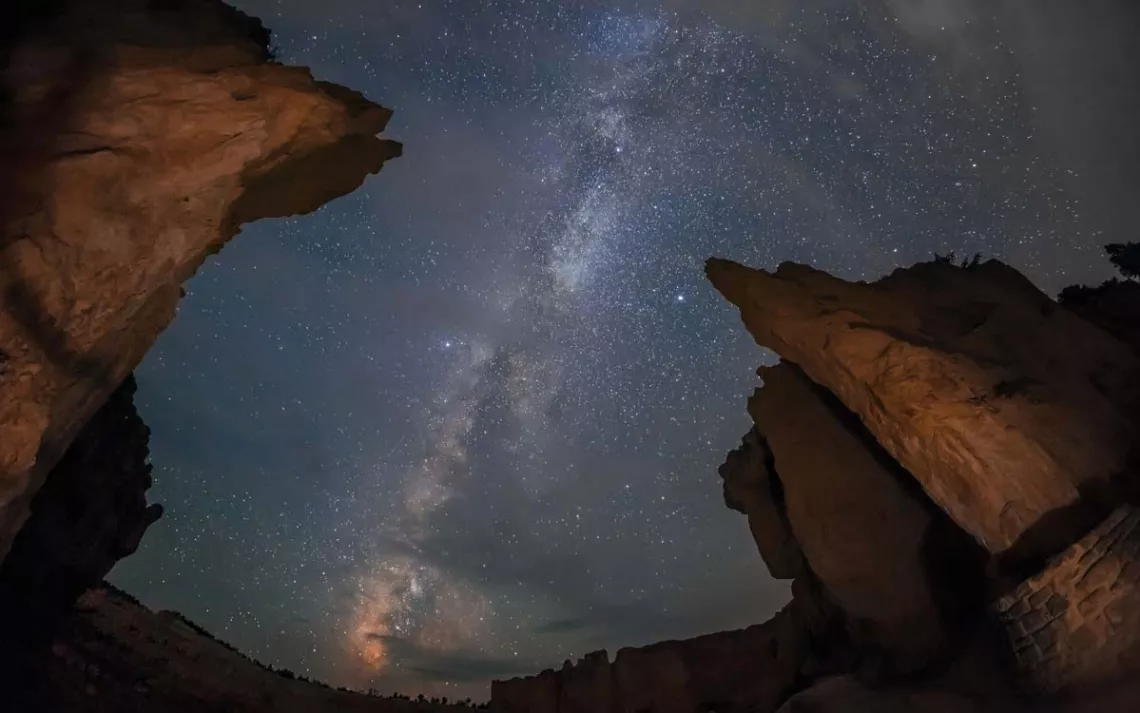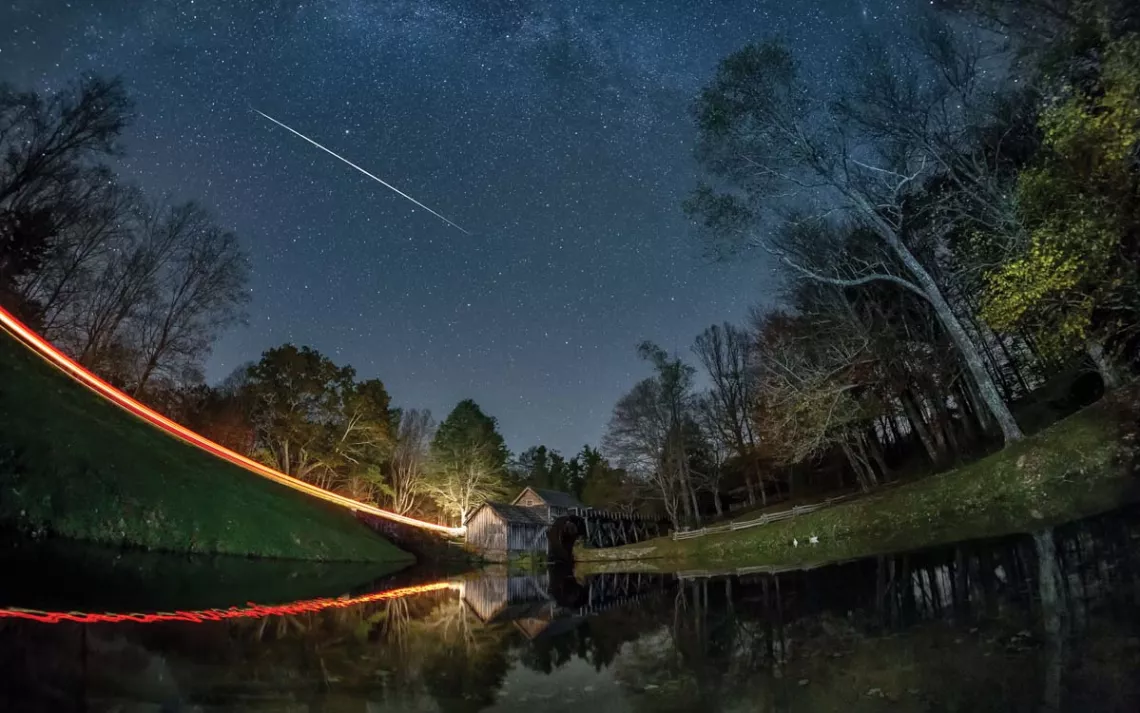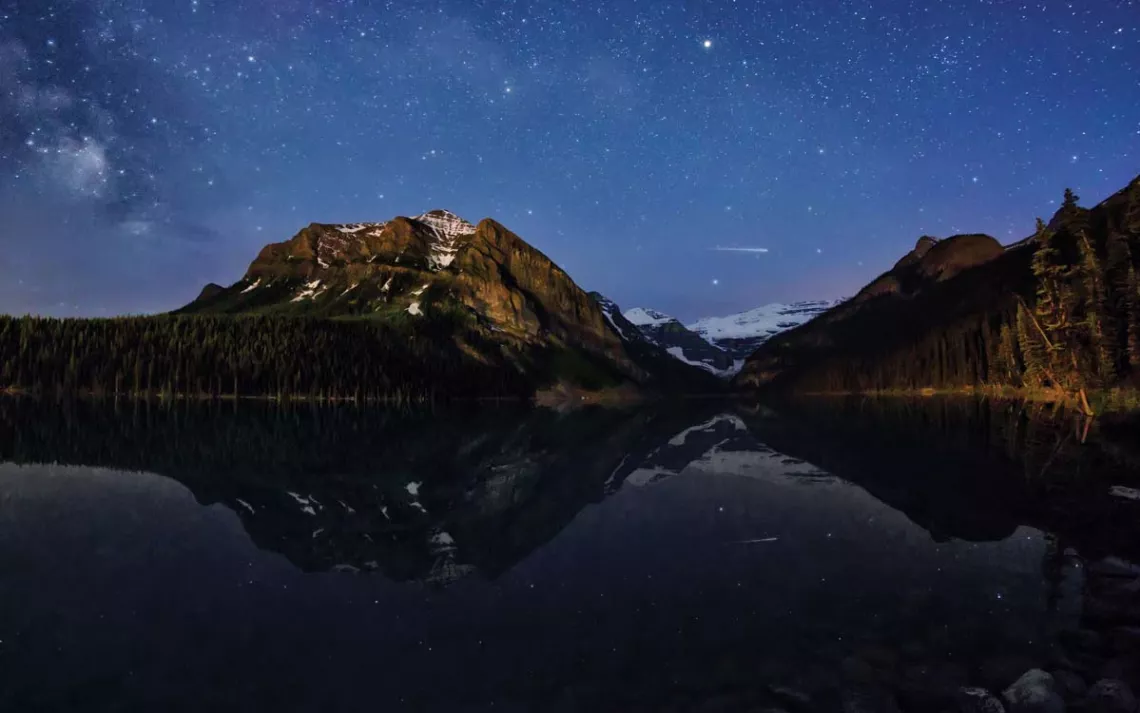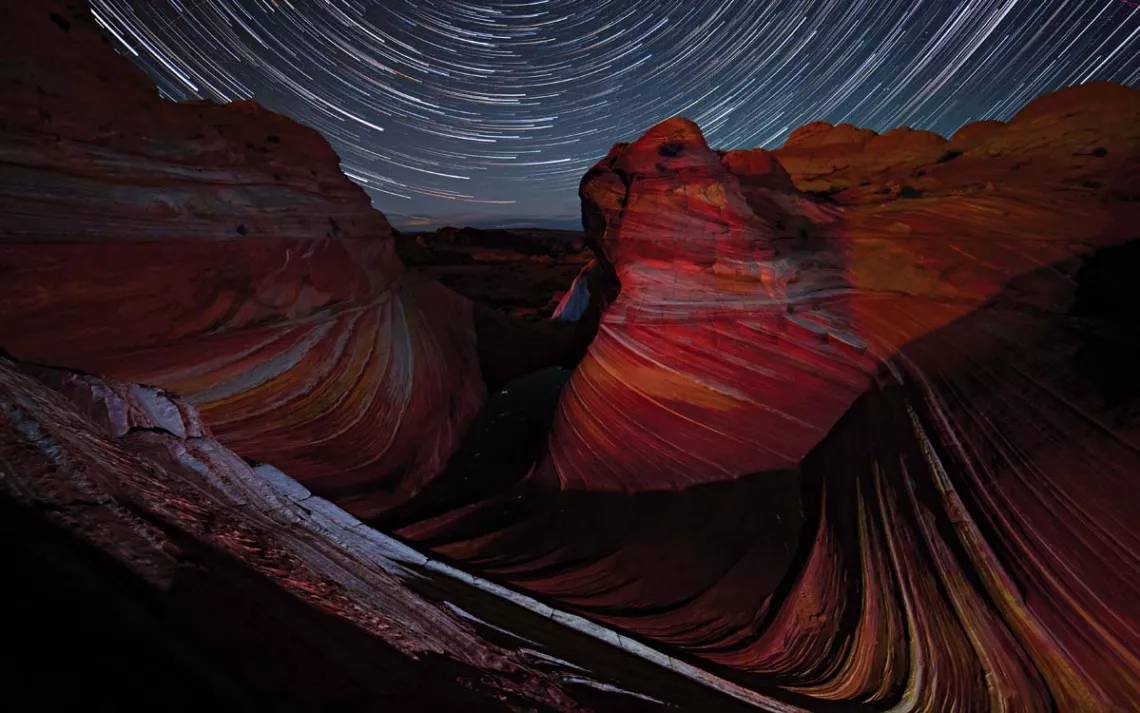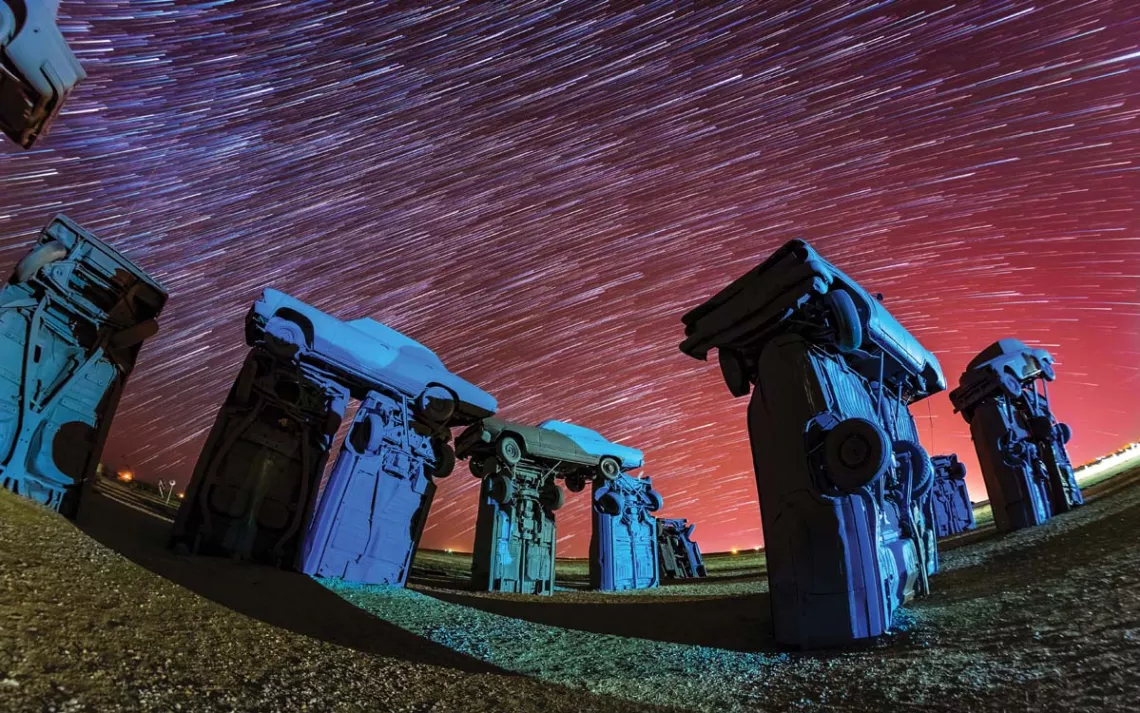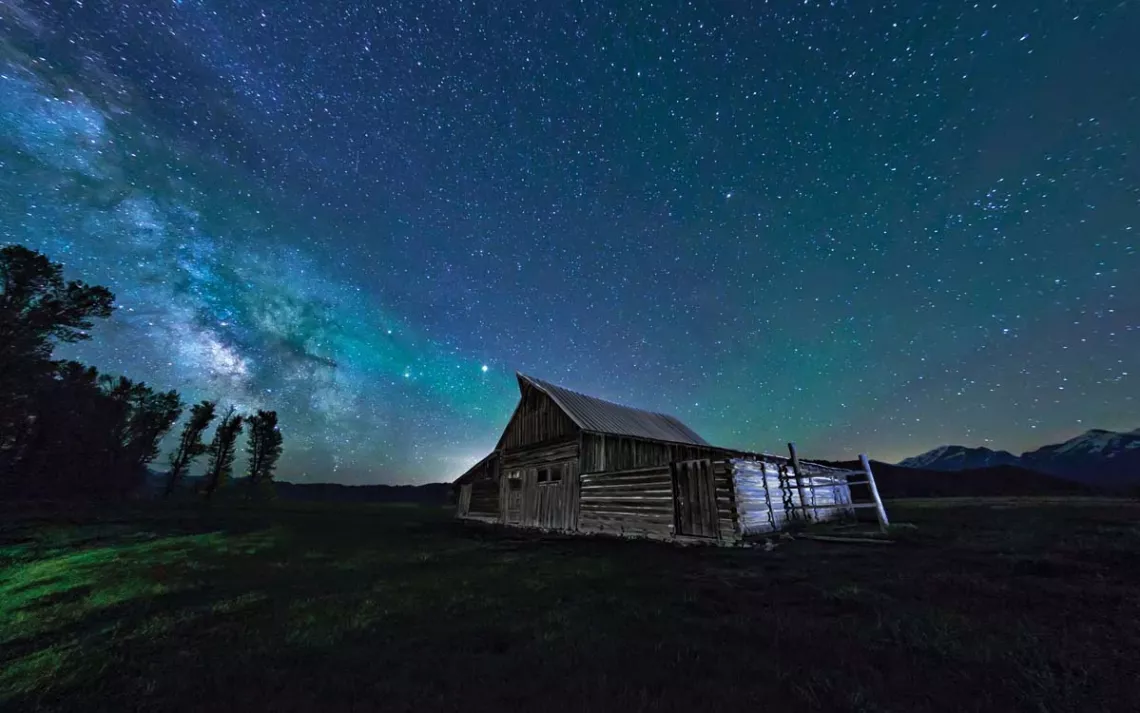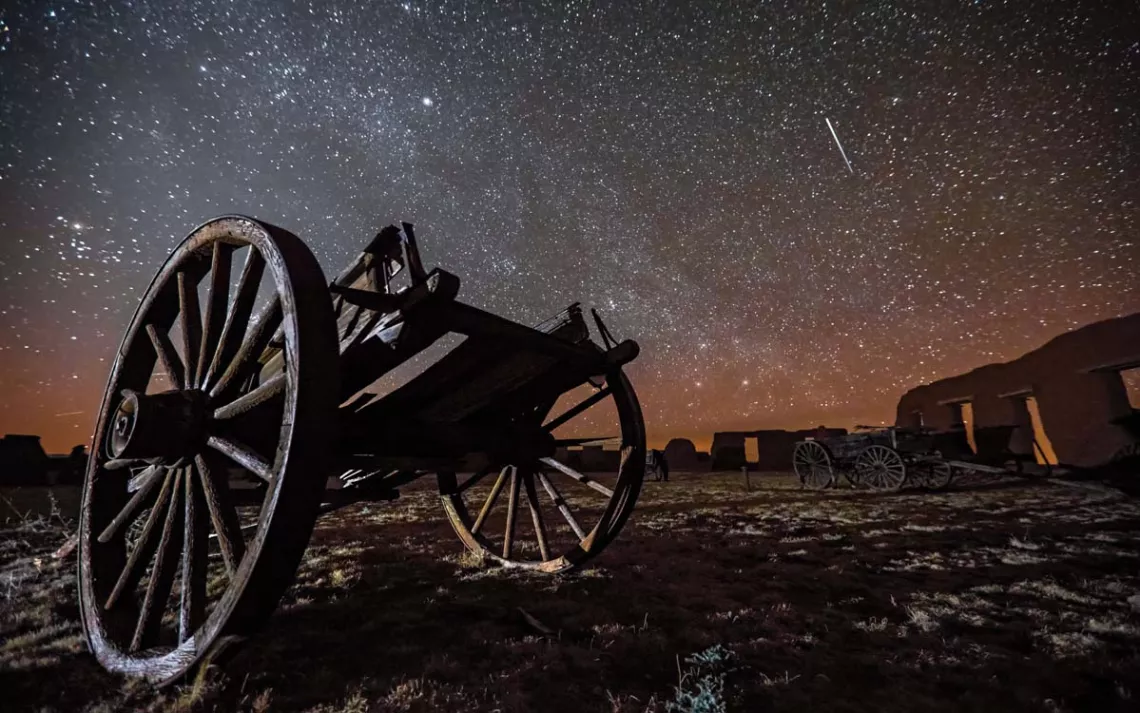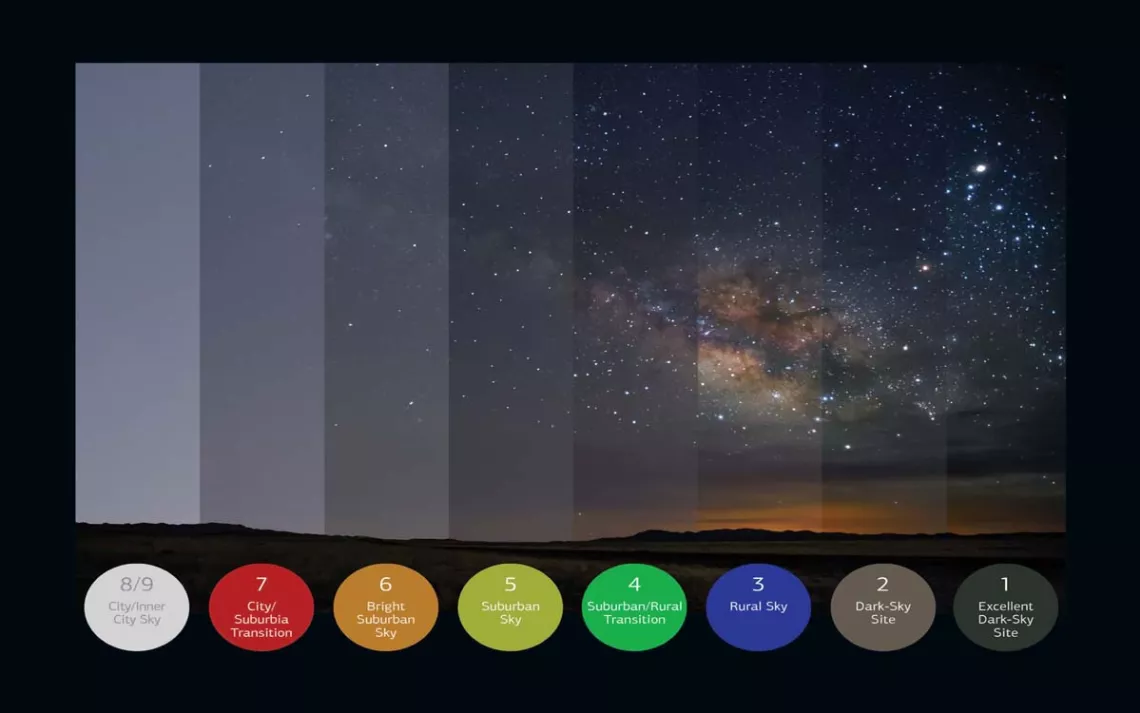Reclaiming the Night
Time-lapse photographers capture North America’s most pristine remaining dark skiesImages excerpted from SKYGLOW (2017). All photos by Gavin Heffernan and Harun Mehmedinovic.
At a time when the Trump administration is rolling back air, water, and wildlife protections, and EPA administrator Scott Pruitt's entertaining climate change skeptics, light pollution may not seem like the most pressing environmental woe. Yet, our over-lit cities profoundly disrupt ecosystems, alter animal migratory patterns, and obstruct astronomical research. Experts estimate that one-third of the world’s population lives under light-polluted skies—a situation that aggressive urban expansion will only worsen.
The Dark-Sky Movement was born in the late 1980s as a response to the nation’s light pollution problem. The idea is to reduce the effects of artificial lighting on fragile flora and fauna, slash energy usage, and mitigate the psychological and biological repercussions of electric light on a human race that isn’t wired to filter it.
The movement has inspired policies to promote energy-efficient outdoor lighting and resulted in formally recognized dark-sky preserves—protected areas, found mostly in national parks, that abide by the International Dark-Sky Association’s (IDA) zero light pollution policy. It’s also produced IDA Dark-Sky communities, such as Flagstaff, Arizona; Borega Springs, California; and Merritt, British Columbia—towns that commit to down-cast lighting, better-focused lights, and other forms of light pollution abatement.
These communities are minimizing the smoggy, orange skyglow that manifests when vast amounts of artificial light from large shopping centers and stadiums scatters throughout the atmosphere, thanks to dust and gas molecules. It’s why the sky tends to shine five to 10 times brighter in urban areas than in the country. This wreaks havoc on our circadian rhythms and can harm nocturnal animals, which have biologically evolved to depend on hours of uninterrupted nighttime. And it’s why about 80 percent of North Americans can no longer discern the Milky Way.
Thanks to initiatives like Earth Hour and International Dark Sky Week, the public is becoming more cognizant of the threat. Three years ago, time-lapse filmmakers Harun Mehmedinovic and Gavin Heffernan collaborated with the International Dark-Sky Association to capture the cosmos still evident in our most magnificent night skies. How? By traveling more than 150,000 miles—their car stuffed with tripods and lenses and digital reflex cameras—to capture more than 3 million photographs.
The result is SKYGLOW, a 192-page hardcover book blending fantastical imagery with celestial observation and cosmological mythography. To create the book and its accompanying Blu-Ray DVD—which reveals the breadth of a night sky’s celestial bodies—the photographers, much like sailors and early explorers, had to learn to navigate natural skyglow, which comes from the sun, moon, stars, and auroras.
“The ideal time to capture the sky is around seven days out from a new moon,” says Mehmedinovic, “because that’s when you’ll have the least interference. For a window of an hour or two, you can get the most pristine photographs.”
According to Heffernan, the project required long exposure times. “The camera is open for about 25 to 30 seconds per picture, which allows a lot of light to come flooding in,” he says. “This lets us see more of the night sky than we could see with the naked eye—like the Milky Way and the constellations. For some shoots, we only had one night, so we’d go and set up six or seven of these cameras simultaneously to try to cover as much of the location as possible.”
The project found the two men retreating further and further from the moon—and from civilization. “Cities that are 20 or 30 miles away can just blow out half the sky for us, ruining a shot,” Heffernan says. “That’s why we’re always searching for darker and darker locations.”
The pursuit of night brought Mehmedinovic and Heffernan all across the United States, though the skies above Southern California and the Southwestern desert proved most pristine. Occasionally, they’d fly—it’s how they captured the night skies above Hawaii and Alberta—or take ferries and private planes to remote spots. To reach Mehmedinovic’s personal favorite shoot, Vermilion Cliffs National Monument, located just over the Utah border in Arizona and unreachable by vehicle, the sky-chasers hiked six miles, their massive quantities of gear in tow.
“We didn’t even camp once we arrived,” Mehmedinovic says. “We were just up all night shooting; there was never a chance to sleep, because we’d have to go out and reset our cameras every half hour. The locations are so neat that they really keep you going, though. At Vermilion Cliffs, there are no sounds of civilization, and all these gorgeous natural rock formations—it’s one of the rare spots where you can see the sky in its full glory, completely unaffected by humans.”
Several still SKYGLOW images—created from wide, 30- or 40-megabyte raw images and processed in Adobe Lightroom—evidence star trails, or individual stars that appear as streaks and arcs across the image. How to effect this real-life Starry Night aesthetic? “By stacking images from a three-hour trajectory of the night sky and blending them together,” Heffernan says.
Heffernan names one of the IDA’s official dark-sky communities, Borrego Springs, located two hours outside of his home of Los Angeles, as his personal favorite shoot. “They have all these giant sculptures in the middle of the desert—including dinosaurs—so when you’re out there shooting the night sky, you really feel like you’re in a prehistoric time.” He’s also partial to Nebraska’s Carhenge. “It’s so beautiful and surreal, and you stand there just kinda in the middle of nowhere, with birds fluttering around giant cars. It’s the perfect symbol of America.”
Mehmedinovic explains that 10 seconds’ worth of video time-lapse requires three hours of shooting—he and Heffernan would create video by animating still images together at a rate of 24 frames per second. “We’d try to get an hour or two of sleep, then get back to our cameras before the sun started coming up—you start to learn how to calculate the moon and the Milky Way and all sorts of different celestial variables.”
Time-lapse, Mehmedinovic says, enables us to see nature and all its processes in a way that our ancestors couldn’t—nor could anyone else until a few years ago. “Sped up, we see the Milky Way’s colors; we get this perspective we don’t otherwise have,” he says, adding that part of the excitement of time-lapse is that the photographer never knows what he or she is going to get. “We’d come back in the morning sometimes and there’d be something we didn’t see at all—like a meteor or the Northern Lights sneaking across the sky,” he says. “Gavin [Heffernan] even had an Is this an alien? situation, when a light circled around for two hours, like a drone or something. We’re hoping to catch Bigfoot one of these days.”
 The Magazine of The Sierra Club
The Magazine of The Sierra Club
